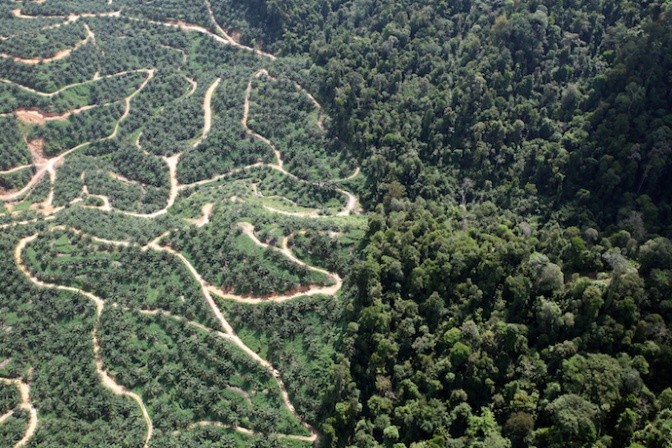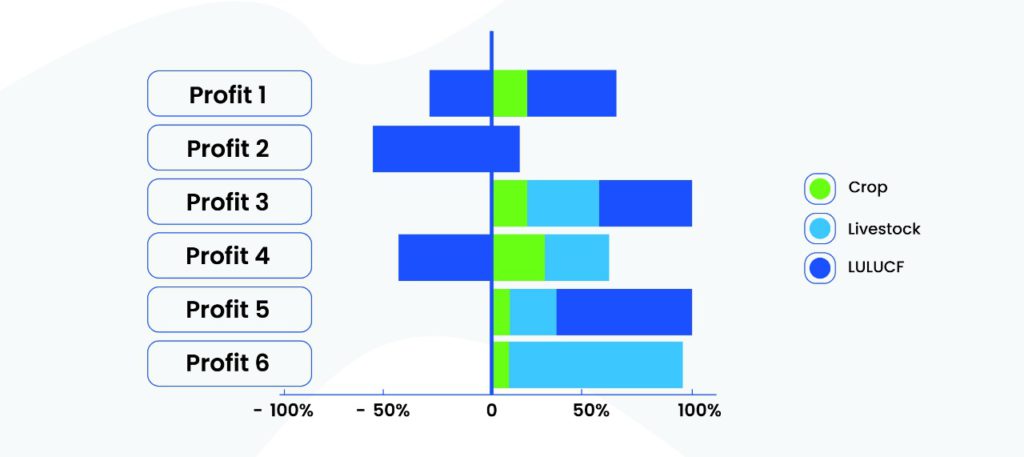Contact: +91 99725 24322 |
Menu
Menu
Quick summary: COP27 offers a unique opportunity to world leaders to build pathways for a resilient and a sustainable agenda, keeping climate change at the forefront. We need to meet the demand of the growing population by protecting both the people and planet. Actions towards GHG mitigation from land, food and agriculture helps to preserve biodiversity and the natural resources.

The world needs to reach net -zero emissions between 2040 and 2050 to fulfil the targets sets by the Paris agreement of limiting further warming to below 1.5˚C. Many countries and companies are setting net-zero climate targets to scale climate action. Net-zero climate commitments from countries represent nearly 90% of the current GHG emissions and if achieved can hold the global warming within 2˚C above pre-industrial levels. However these commitments will not be enough to avert climate catastrophes.
Do you know that about 31% of anthropogenic GHG emissions is contributed by global food production, distribution and consumption?
The major sources of emissions in the food systems are due to manure, fertilizers, crop residues, deforestation, livestock emissions, transport and refrigeration. In India, intensive cultivation of staple crops like paddy and wheat depletes the two most important resources, water and land.
According to Oxfam, using land alone to remove the global emissions to achieve net-zero by 2050 would require at least 1.6 billion hectares of new forests, an area equivalent to five times the size of India
How can we meet the demand of the growing population by balancing both human and environmental health?
United Nations- Sustainable Development Solutions Network(SDSN) has release the FABLE Net-Zero Pathways based on results from scientific modelling by 20 countries covering the entire world. These typologies help in emission abatement activities and sustainable production and consumption.
The Paris agreement set a long term goal of holding the global temperatures to well below 2˚C above industrial levels and ideally below 1.5˚C. Global warming is mainly driven by carbon dioxide and other gases like methane, nitrous oxide and other GHGs. Pathways need to take us to carbon neutrality by 2050 and thereafter reach Climate Neutrality by 2070.
As of today, 129 countries have communicated net zero targets representing 88 % of total GHGs.
However sectoral targets and a clear action map is lacking in the current NDCs and the net-zero targets. Urgent action is needed to limit the temperatures below 2˚C
Countries need to decarbonize their food and energy systems and extend their carbon sinks to reach carbon neutrality. The Agriculture, Forestry and Other Land Uses (AFOLU) sector is critical to increase land-based carbon removals and reduce emissions.
Agriculture accounts for 41% and 75 % of global methane and nitrous oxide emissions with the main sources being livestock production, fertilizer use and rice cultivation. According to IPCC, the anthropogenic GHG emissions from agriculture and the Land use Land Change aggregated as AFOLU accounts for 22 % of global GHG emissions.
Countries need to prioritize their actions across food and land systems to help meet the net-zero targets. The FABLE modelling framework is a set of tailored actions that highlights the extent to which food and land systems contribute to the net-zero targets.
1The countries and regions across the globe are profiled according to their food and land use. 6 different types of mitigation profiles have been created based on three criteria
Changing diets and decreasing excessive food consumption can reduce the pressure on agriculture, avoid destruction of natural ecosystems and reduce GHG emissions. This also benefits human health.
In order to achieve climate targets, large CO2 removals from land will be required to offset residual emissions. A country has this potential if it can at least abate 20% of current GHGs excluding LULUCF.
The current AFOLU emission patterns reveal whether countries have land-based CO2 removal to build on and whether the LULUCF removals can compensate for agriculture emissions.

Profile 1
Countries which are high emitters but also have a great potential to offset mitigation through dietary changes, reforestation and afforestation are classified under profile 1. AFOLU net emitter with livestock emissions. Land based CO2 removal could abate 43% of total GHGs.
Eg USA
Profile 2
AFOLU is a net sink with CO2 removals offsetting the emissions from agriculture. The land-based CO2 removal can abate 86 % of total GHGs mainly through afforestation and restoration of peatland.
Eg. Russia, Sweden
Profile 3
AFOLU is a net emitter with emissions from LULUCF. The food consumption is not much but red meat consumption is high. The land-based CO2 removal potential could abate more than the current GHGs through afforestation.
Eg. Brazil, Canada, Mexico
Profile 4
Countries which are high emitters but have limited potential to offset emissions through afforestation are classified under profile 4.
AFOLU is a net emitter with agriculture emissions higher than CO2 removals but the land-based CO2 removal potential is limited, less than 5 % of the current GHG emissions. Countries are in the temperate zones.
Eg Europe, Argentina and China
Profile 5
The LULUCF emissions dominate the AFOLU emissions, and the food consumption is below the excessive limit. The land-based CO2 removal could abate more than the current GHG emissions. The countries fall in the tropical zone.
Eg. Ethiopia, Indonesia
Profile 6
Countries where agriculture dominates, but per capita food consumption is not excessive and have limited potential to abate Co2 fall under profile 6.
AFOLU emissions are dominated by agriculture emissions and food consumption is not in excess. The land-based CO2 removal potential can abate only 6 % of the total current GHG emissions.
Eg. India.

The ongoing COP27 deliberations need to address the action agenda developed with these countries. Countries with excessive food consumption should focus on reducing their average calorie consumption and food waste and the countries with consumption below excessive limits should increase their calorie consumption per capita to meet food security targets and focus on reducing post-harvest losses in the food supply chains. These shifts will lead to a considerable reduction in global demand of producing animal sourced food and can result in slashing the emissions from crop and livestock by 2030.
This analysis can also help in different mitigation approaches that need to be followed by different regions as the challenges are different. The Global South should seek investments from richer countries and increase expenditure on research and innovation for sustainable food systems, climate smart agriculture and resource management.
Countries need to work together to maximize the emission reduction potential. The members of the FABLE consortium can provide mitigation roadmaps for food and land systems, consistent with nation’s priorities.
Small and marginal farmers form the majority in agriculture production in our country. The decisions are made as a response to the government policies like credit availability and minimum support prices. Droughts and floods have made agriculture less profitable and it is challenging to adopt long term sustainable practices.
Actions towards GHG mitigation from land, food and agriculture protects human health and the environment and preserves biodiversity and the natural resources.
COP27 has five key focus areas that are Nature, Food, Water, Industry Decarbonization and Adaptation. These will be clearly impacted by adopting sustainable agriculture practices and making dietary shifts in food consumption. Policy makers and stakeholders need to come to the table and align their local goals with common objectives.
Major food and beverage companies like Nestle, Mars, Unilever, Pepsico and General Mills have adopted science-based targets aligned with the 1.5˚C goal across their value chains. Specifically, these companies have targeted their Scope 3 emissions associated with their supply chains and sourcing of ingredients as the major source of emissions come from land use and agriculture in the food sector.
Check how companies can accelerate climate action with food transformation.
TraceX is helping these companies with its Blockchain powered Decarbonizing Solutions. Trace Carbon is a one stop Carbon management platform that helps to measure Scope 3 emissions with accuracy, track them and suggest mitigation and reduction strategies along with credible offsetting and sustainable reporting of metrics.
Catch us at COP27 to get an insight into this decarbonization platform to accelerate your net-zero journey.
